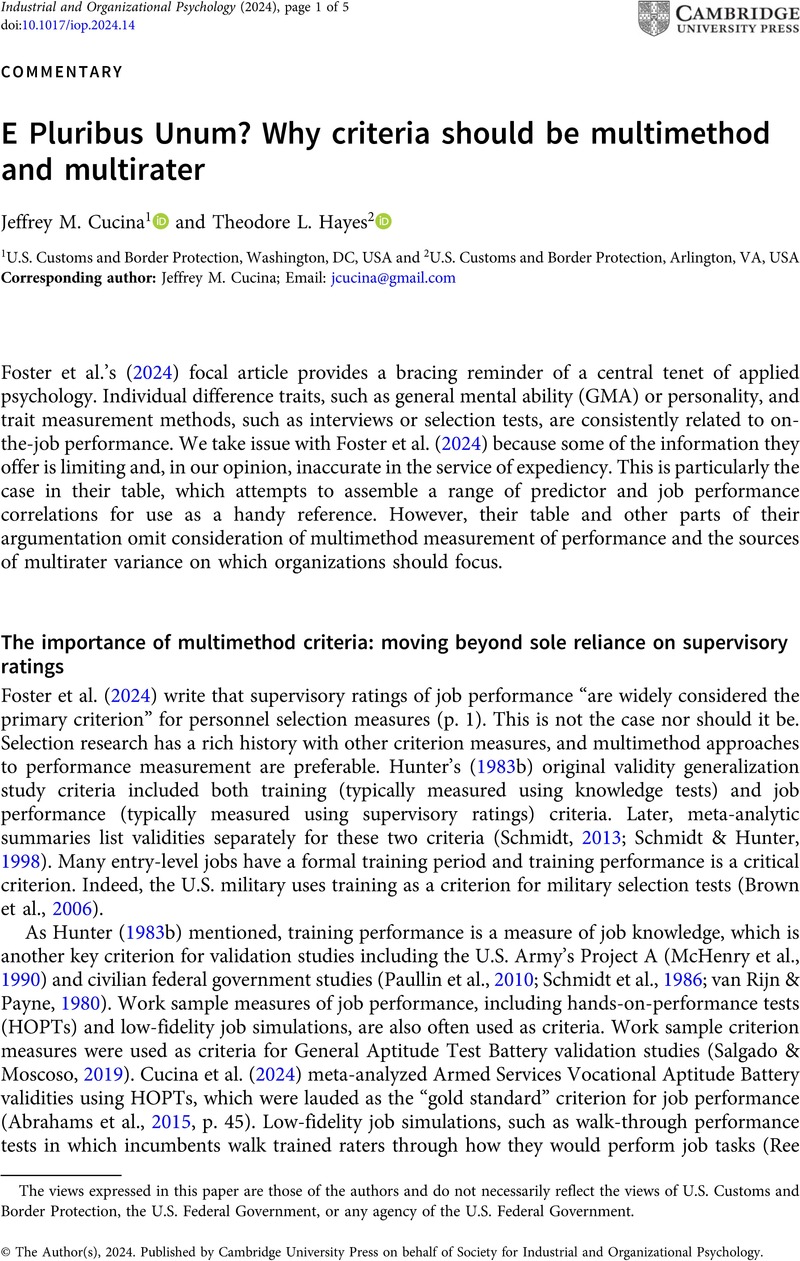No CrossRef data available.
Article contents
E Pluribus Unum? Why criteria should be multimethod and multirater
Published online by Cambridge University Press: 22 August 2024
Abstract

- Type
- Commentaries
- Information
- Copyright
- © The Author(s), 2024. Published by Cambridge University Press on behalf of Society for Industrial and Organizational Psychology
Footnotes
The views expressed in this paper are those of the authors and do not necessarily reflect the views of U.S. Customs and Border Protection, the U.S. Federal Government, or any agency of the U.S. Federal Government.




